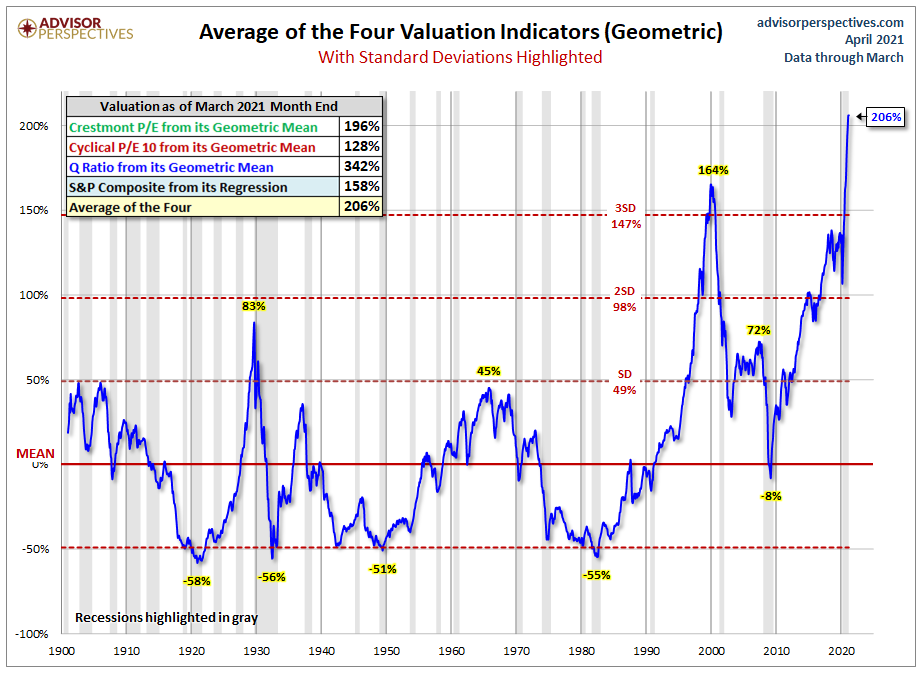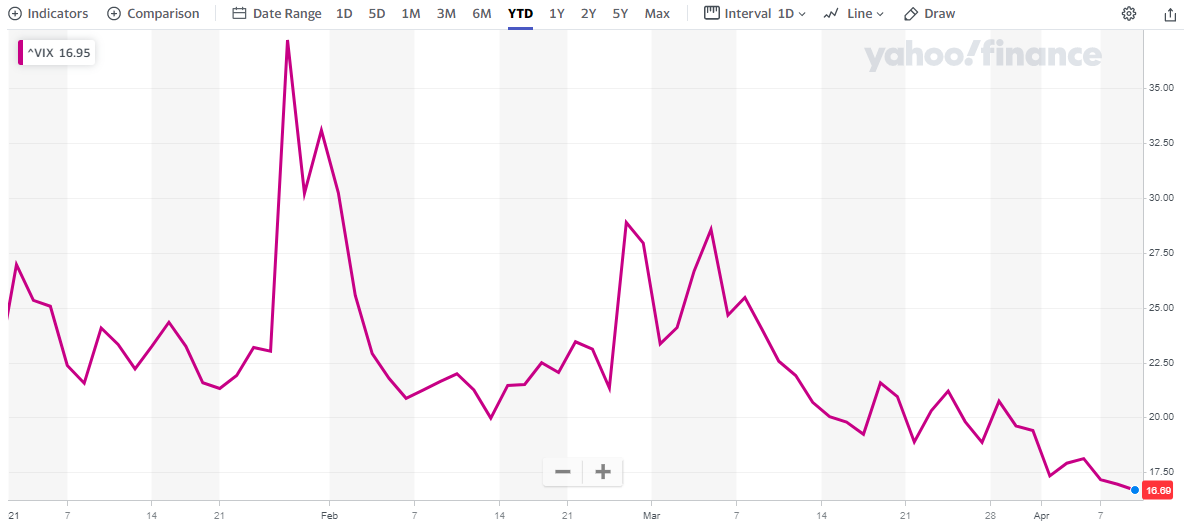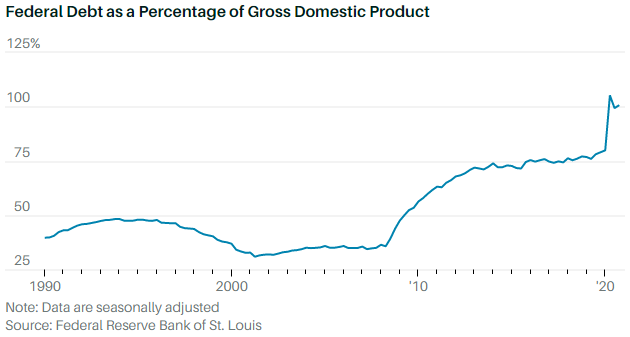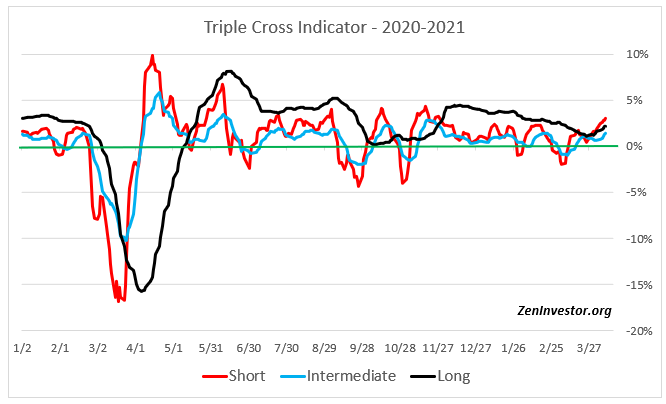A quick summary
- The market continues to make new highs.
- Consumer confidence is high.
- Employment numbers are improving.
- Vaccines are becoming more plentiful.
- Businesses are reopening.
- The housing market is booming.
- Auto sales are picking up.
- Retailers are seeing increased traffic and spending.
- What could possibly go wrong?
The S&P 500 valuation bubble continues to inflate.
The market is now priced at more than twice its' fair value, based on four popular valuation metrics. The chart below is from Jill Mislinski at Advisor Perspectives.
Volatility has declined, perhaps indicating complacency.
The long-term average for volatility, as measured by the VIX index, is around 13. Today it's 17. You can't read too much into the VIX numbers but clearly investors are becoming less anxious.
The elephant in the room.
The chart below shows that federal debt is now 100% of U.S. total GDP. Is this a problem? Not as long as the economy grows faster than the debt. But this chart doesn't include the most recent round of stimulus checks or the possibility of a large infrastructure bill.
If the economy should stumble, or if interest rates should climb faster than the FED likes, or if inflation should begin to surge, market valuations could begin to revert back to normal levels. That could cause a negative feedback loop for asset prices.
Final Thoughts
The market has been on a tear for more than a year now, with no end in sight. I'm advising clients to stay invested until the music stops. How will we know when the music has stopped? Watch the dip-buyers.
For the past year they have rarely allowed the market to decline by more than 5% before stepping in to save the day. Watch for a decline of 5%, followed by a rally that fails to make a new high.
If the market then declines to, or close to, 8%, it could mean that the dip-buyers are losing some of their confidence. And without them, the sheer weight of nosebleed valuations and massive debt could stop the music.




